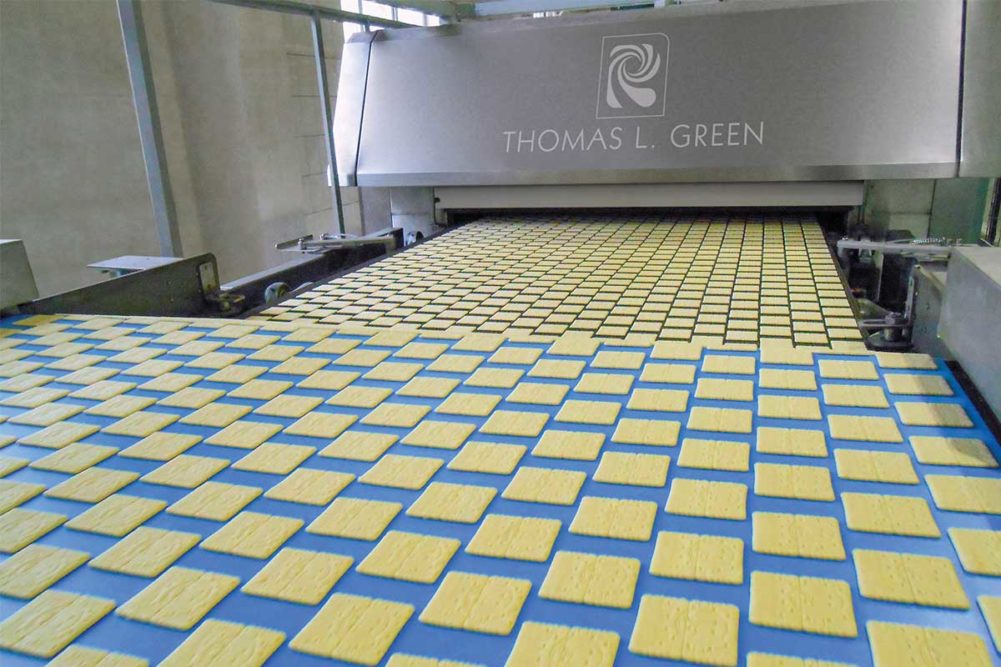Once product is baked, technology can go a step further with vision systems that evaluate the product coming out of the oven. Quality control technology like this can determine if the product is within spec and communicate with the oven on whether it’s running too fast, slow, hot or cold. Quality controls don’t just communicate with the oven, however, but the entire production line.
“There are overall cascade systems on production lines these days,” explained Dan Christie, account manager, Spooner Vicars, a Middleby Bakery company. “The problem might be the oven, but it might not. Maybe the cracker is dark because it’s too thick, so the issue is with the sheeting process. In that case, the system can talk to the last gauge roller and tell it to reduce the dough sheet more. And the technology is cascaded, so it can communicate with the other gauge rollers and laminator, so they all adjust.”
These overall process controls take the burden of a consistent quality cracker off the shoulders of the operator. With a diminishing labor pool of skilled operators, this level of control is becoming a basic requirement for equipment.
“Overall process control tends to be more critical with yeast-leavened crackers and the availability of operators with the appropriate skill sets is becoming more rare,” pointed out Kevin Knott, technical sales manager, Bühler Group. “The combination of both means we as equipment manufacturers have to develop better system controls to enable more consistent crackers to be produced.”
Don Smith, director, engineering sales and service, Reading Bakery Systems (RBS), sees this in his customers’ requests for equipment with a more advanced level of controls. With automation, bakers can eliminate human error and issues of timing when it comes to yeast-leavened cracker production. And today’s technology allows bakers to adjust to real-time changes in product quality.
“The RBSConnect controls platform facilitates better communication, coordination of the operations and the ability to collect and analyze data,” he said of RBS’ controls. “RBSConnect allows manufacturers to monitor real-time information, receive preventative maintenance information, KPIs, alarm history and trending. This information helps replace parts and discover potential machine problems before they result in costly downtime.”
The monitoring of equipment health also assists in supply chain challenges regarding replacement parts, which Mr. Christie pointed out is another challenge all bakers are facing. Armed with preventative maintenance data, bakers can stock their replacement parts and maintenance departments more strategically.
“A reducer, a motor, an isolator can shut you down in a heartbeat,” Mr. Christie said. “The supply chain is backed up enough that you can’t rely on the OEM to get the part for you because they are taking the same hit. Highlight which parts on the line would cause production to shut down and get those on order and hold some spares because there will be no guarantees you can get that part if the line goes down.”
Yeast-leavened crackers may seem simple, but they are anything but. These crackers require attention to detail to ensure consistent quality that consumers expect. Automation holds the key to working around the many pitfalls that can crop up during production.
This article is an excerpt from the August 2022 issue of Baking & Snack. To read the entire feature on Cracker Processing, click here.






